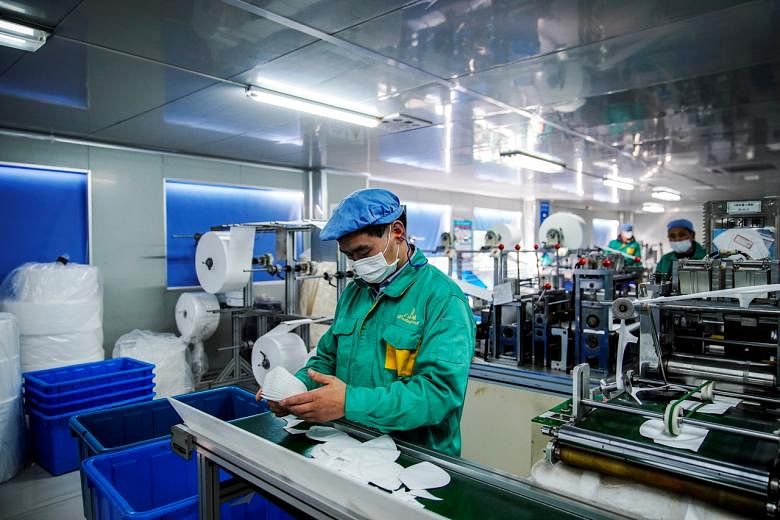BEIJING (BLOOMBERG) - China's manufacturing sector expanded at a slower pace in January as a seasonal slowdown, Covid-19 outbreaks and a housing market drop dragged activity at small firms to the weakest since the depth of the pandemic.
The official manufacturing Purchasing Managers' Index (PMI) declined to 50.1, the National Bureau of Statistics (NBS) said on Sunday, just above the median estimate of 50. The non-manufacturing gauge, which measures activity in the construction and service sectors, fell to 51.1, also marginally above the consensus forecast. The 50-mark separates expansion from contraction.
Chinese factories often see a production lull in January and February as workers head home for the Chinese New Year holidays. Activity has also been affected this year by the government's orders for steel plants to trim output to reduce air pollution ahead of the Winter Olympics in Beijing, which begins on Friday.
The disruptions add to the woes facing the Chinese economy, with home sales falling and consumption sluggish due to tightened restrictions to contain the spread of the highly contagious Omicron virus variant. Residents in places where there have been recent Covid-19 outbreaks, including Beijing, Shanghai and the northern port city of Tianjin, have been urged to not leave the cities unless necessary.
"Industrial activities slowed due to weak domestic demand," chief economist Zhang Zhiwei at Pinpoint Asset Management wrote in a note. "The slowdown is particularly severe for the small firms."
The PMI gauge of small companies dropped to 46 this month, the lowest since February 2020 and taking a contracting streak to a ninth month. That came as the indicator of large companies rose to 51.6, the highest in six months.
The Caixin Manufacturing PMI, also released on Sunday, fell to 49.1, the worst in almost two years. The private survey focuses on smaller, export-oriented firms compared with the official manufacturing PMI.
Manufacturers were also squeezed by higher costs, with input prices rising at the fastest rate in three months, according to the official data. "That could drive the producer price index up and narrow the room for monetary policy," said Mr Bruce Pang of China Renaissance Securities Hong Kong.
To spur growth, the central bank has cut key interest rates, lowered reserve requirements for lenders and vowed to open its toolbox wider, in response to top leaders' call for prioritising stability.
Still, a set of earliest available indicators tracked by Bloomberg sent mixed signals about the state of the economy in January, with the housing market and consumer spending staying weak and business confidence and stocks tumbling.
Construction activity continued to cool this month, with the sub-index falling to 55.4, NBS figures show, suggesting sentiment remained subdued given the property downturn and the limited effect that government spending on infrastructure is having so far. The approaching holiday and cold winter may have also had some impact on building.
The expansion of the service sector also cooled sharply to 50.3 per cent, the lowest since August last year, according to the data, as activity in railway and road transportation, accommodation and capital market services contracted.
"The weak PMI indicates the policy easing measures from the government have not yet been passed to the real economy," according to Pinpoint's Dr Zhang. "We expect the government will step up policy supports in the coming months, particularly through more fiscal spending."

